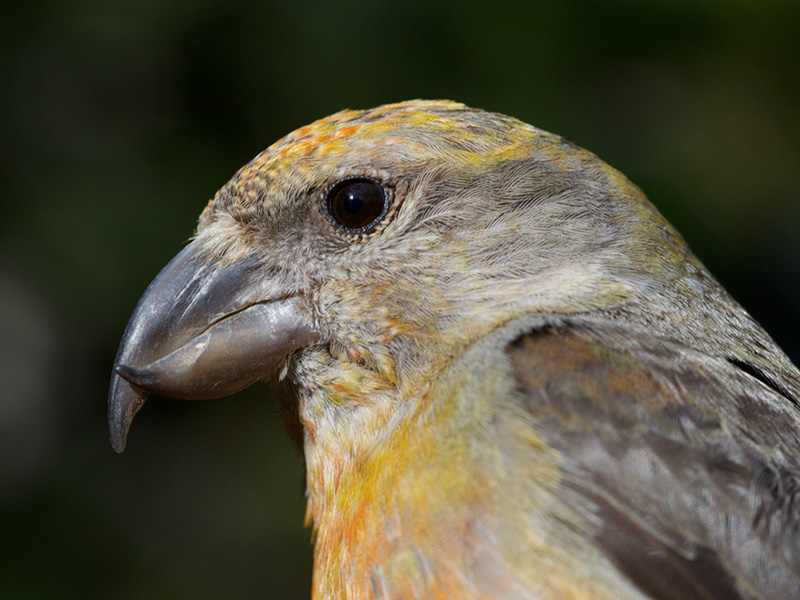While gathering data on mate pairing patterns of Red Crossbills in the South Hills, Idaho for my dissertation, I occasionally found nests being built. Realizing that we knew so little about what eventually was described as the Cassia Crossbill, I decided to characterize nest locations. Trevor Fetz, another graduate student, was also conducting fieldwork on crossbills in the South Hills, so we combined forces. But teaching and family became my priority and writing this paper took a backseat. But over time, the importance of publishing this work increased. Then last fall a fire burned nearly a quarter of the already limited (67 km2) lodgepole pine forest occupied by the Cassia Crossbill. We had realized that the accelerating frequency, size, and intensity of fires in the region was going to be a threat, but now the threat could no longer be ignored and the impetus for publishing our work came to a head.


We found that Cassia Crossbills weren’t particularly choosy about slope or aspect, but they preferred to nest in large lodgepole pine in mature forests dominated by pine. This was good to know because this is the type of habitat where Cassia Crossbills mostly feed. Thus, policies such as protecting mature stands of pine and accelerating the growth of trees in young overgrown stands by thinning would be a win-win for crossbills in terms of both food and nesting.
Other crossbills have been found to nest in mature forests too. Crossbills also generally prefer open woods presumably to avoid nest predation by tree squirrels. Interestingly, tree squirrels are absent from the range of the Cassia Crossbill and it prefers to nest in relatively densely wooded pine stands. This result parallels that found for the Hispaniolan Crossbill, which also occurs in the absence of tree squirrels. The absence of tree squirrels can explain why Cassia Crossbills do not prefer more open woods for nesting, whereas protection from inclement weather in early spring when Cassia Crossbills begin nesting would favor nesting in denser stands. Cold weather and snow storms could also explain their preference to nest on the south sides of trees.
We shouldn’t be surprised that tree squirrels, and in the case of the Cassia Crossbill the absence of tree squirrels, have had an impact. Indeed, it is the absence of tree squirrels that accounts for the Cassia Crossbill and its coevolution with lodgepole pine favoring deeper bills and thicker cone scales, respectively. However, this limits the Cassia Crossbill to mature lodgepole pine on two small mountain ranges with nowhere to escape. Most elsewhere within the range of lodgepole pine, tree squirrels are common. Thus, the Cassia Crossbill’s fate will become increasingly reliant on whether we can maintain mature lodgepole pine stands for nesting and feeding in a changing climate.
The results of this study were recently published in the Journal of Field Ornithology:
Smith, J. W., T. Fetz, M. Shea, and C. W. Benkman. 2021. Nest-site selection by Cassia Crossbills and management implications. Journal of Field Ornithology. https://doi.org/10.1111/jofo.12378
Guest blog post by:
Julie W. Smith
Department of Biology, Pacific Lutheran University
Craig W. Benkman
Department of Zoology and Physiology, University of Wyoming
